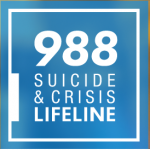At the height of the pandemic, a convergence of factors, including social isolation, increased screen time and concern for the safety of loved ones, caused a surge in mental health complaints. However, some emergency rooms have proved ill-equipped to diagnose and treat youngsters in need of psychiatric care, according to NPR, so children are placed in private rooms until a bed in a psychiatric ward becomes available.
But the practice of isolating kids and teenagers experiencing mental health crises in ERs, also known as emergency room boarding, can potentially compound existing psychiatric problems. In one case, a 13-year-old Massachusetts girl was admitted to the ER in March 2021 after threatening suicide. She spent 10 days in the hospital’s lecture hall and an additional seven in what NPR describes as “a small, windowless room” before being transferred to a Boston-area hospital. While there, surveillance cameras and security guards—there to ensure her safety—caused her to feel claustrophobic.
“It’s [kind of] like prison,” the teen told NPR. “It feels like I’m desperate for help.”
While people of all ages can develop coronavirus-related mental health problems, children and adolescents may be especially susceptible. In May, researchers at the Kaiser Family Foundation published a report that found that more than 25% of surveyed high schoolers stated they had experienced a decline in their “emotional and cognitive health” as a result of the pandemic. The investigation also found that more than 20% of kids ages 5 to 12 had experienced a similar problem.
In Massachusetts, since the pandemic began, psychiatric emergency room boarding rates have risen between 200% and 400% per month, NPR reported. The statistics have alarmed advocates.
“This is really unlike anything we’ve ever seen before, and it doesn’t show any signs of abating,” Lisa Lambert, the executive director of the children’s mental health charity Parent/Professional Advocacy League, told NPR.
Based on data collected by the Centers for Disease Control and Prevention (CDC), a disproportionate number of ER boarders are teenage girls. Between 2019 and early 2021, the CDC noted a 51% increase in trips to the emergency room following suicide attempts by teenage girls. However, women and girls are far from the only at-risk populations. Between 2019 and early 2021, according to other CDC data, children between ages 5 and 11 and children between 12 and 17 saw a 24% and a 31% increase, respectively, in trips to the ER for mental health reasons.
In a bid to improve or safeguard youngsters’ well-being, some politicians have supported students taking mental health days. Read “The Kids Are Not All Right. A Maryland Bill Aims to Help” for more on this novel legislation, and read “‘I’ve Tried Everything’: Pandemic Worsens Child Mental Health Crisis” to learn about the nationwide crisis that precipitated the proposed law.







Comments
Comments